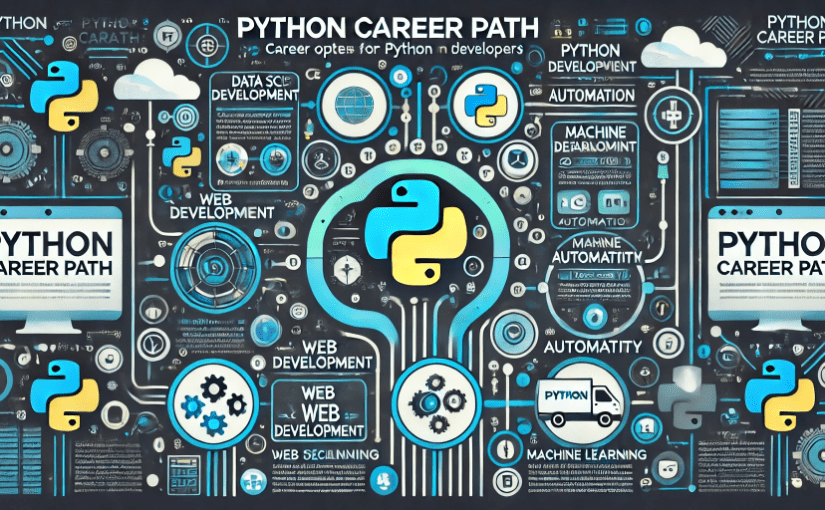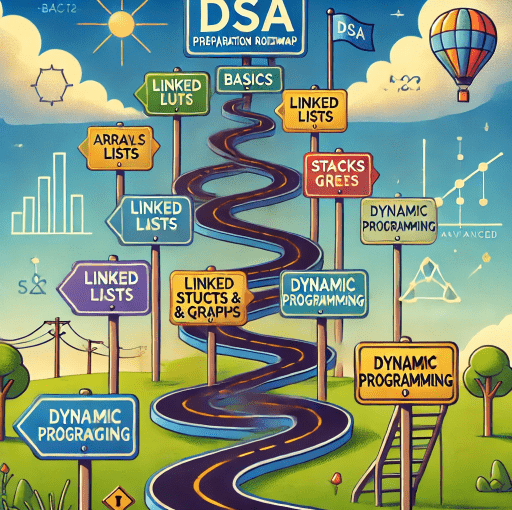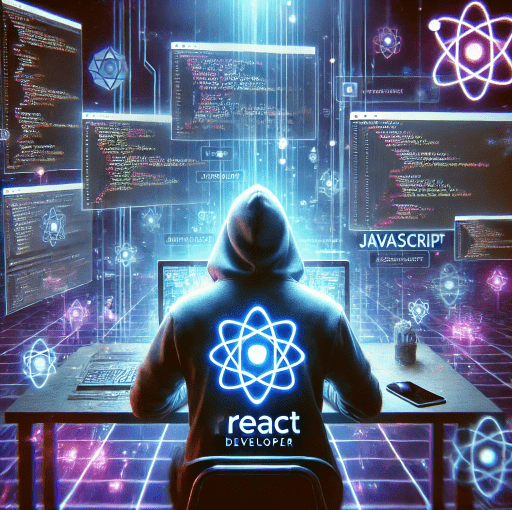Embarking on your first Data Structures and Algorithms (DSA) interview can be both exciting and daunting. This comprehensive guide will walk you through the essential steps to ensure you are well-prepared for this crucial milestone in your career. Preparing for your first DSA interview involves a combination of understanding fundamental concepts, practicing coding problems, and honing your problem-solving skills.
Before diving into the preparation strategies, it’s important to familiarize yourself with common dsa interview questions that you might encounter. These questions often test your understanding of basic data structures like arrays, linked lists, stacks, and queues, as well as your ability to apply algorithms to solve problems efficiently.
For freshers, preparing for a DSA interview can be particularly challenging. However, with the right approach and resources, you can significantly improve your chances of success. Exploring dsa interview questions for freshers is a great starting point. These questions are designed to assess your grasp of fundamental concepts and your ability to think critically under pressure.
Understanding the Basics
Data Structures: The Building Blocks
To excel in your first DSA interview, you need a solid understanding of various data structures. Each data structure has its unique characteristics and use cases. Here are some of the most important data structures to focus on:
- Arrays: Arrays are the simplest data structures, consisting of a collection of elements identified by index or key. Understanding array manipulation, such as insertion, deletion, and traversal, is crucial.
- Linked Lists: Linked lists are dynamic data structures that consist of nodes, where each node contains data and a reference to the next node in the sequence. Familiarize yourself with different types of linked lists, such as singly linked lists, doubly linked lists, and circular linked lists.
- Stacks and Queues: Stacks and queues are linear data structures that follow the Last In, First Out (LIFO) and First In, First Out (FIFO) principles, respectively. Understanding their implementation and applications is essential.
- Trees and Graphs: Trees and graphs are non-linear data structures that represent hierarchical and network relationships, respectively. Focus on binary trees, binary search trees, and graph traversal algorithms like Depth-First Search (DFS) and Breadth-First Search (BFS).
Algorithms: The Problem Solvers
Algorithms are step-by-step procedures or formulas for solving problems. To prepare for your first DSA interview, you should be comfortable with various algorithms, including:
- Sorting Algorithms: Sorting algorithms arrange data in a specific order. Familiarize yourself with algorithms like bubble sort, selection sort, insertion sort, merge sort, and quicksort.
- Searching Algorithms: Searching algorithms help locate specific elements within a data structure. Understand linear search, binary search, and their applications.
- Graph Algorithms: Graph algorithms solve problems related to networks and relationships. Focus on algorithms like Dijkstra’s algorithm, Floyd-Warshall algorithm, and Kruskal’s algorithm.
- Dynamic Programming: Dynamic programming is an optimization technique that solves complex problems by breaking them down into simpler subproblems. Understand problems like the knapsack problem, longest common subsequence, and matrix chain multiplication.
How to Prepare for Your First DSA Interview
Develop a Study Plan
Creating a study plan is the first step in preparing for your first DSA interview. Allocate time for each topic, focusing on your weaker areas. Consistency is key, so ensure you study regularly and practice coding problems daily.
Practice Coding Problems
Practicing coding problems is crucial for improving your problem-solving skills and familiarizing yourself with different data structures and algorithms. Utilize online platforms that offer coding challenges and participate in coding contests to test your knowledge and speed.
Focus on Problem-Solving Skills
Developing strong problem-solving skills is essential for acing your first DSA interview. Approach each problem systematically, breaking it down into smaller parts, and devising a step-by-step solution. Practice explaining your thought process clearly and concisely.
Mock Interviews
Conducting mock interviews is an excellent way to simulate the interview environment and receive feedback on your performance. Practice with friends, mentors, or use online platforms that offer mock interview services. Focus on improving your communication skills and ability to think on your feet.
Common Challenges and Solutions
Time Management
One of the biggest challenges in a DSA interview is managing your time effectively. Practice solving problems under time constraints to improve your speed and efficiency. Prioritize solving easier problems first to build confidence and momentum.
Handling Complex Problems
Complex problems can be overwhelming, but breaking them down into smaller, manageable parts can make them more approachable. Use pseudocode to outline your solution before writing the actual code. This approach helps organize your thoughts and identify potential issues early on.
Dealing with Nervousness
Feeling nervous before an interview is natural, but it’s important to stay calm and focused. Practice deep breathing exercises, visualize success, and remind yourself of your strengths and preparation. Confidence comes from thorough preparation and belief in your abilities.
Tips for Success
Stay Updated
The field of data structures and algorithms is constantly evolving, with new techniques and optimizations being developed regularly. Stay updated with the latest trends and advancements by following relevant blogs, attending webinars, and participating in online forums.
Seek Feedback
Feedback is invaluable for improving your skills and identifying areas for improvement. Seek feedback from mentors, peers, and online communities. Use constructive criticism to refine your approach and enhance your understanding of complex concepts.
Maintain a Positive Attitude
Maintaining a positive attitude is crucial for success in your first DSA interview. Believe in your abilities, stay motivated, and approach each challenge with enthusiasm. A positive mindset can significantly impact your performance and overall interview experience.
Advanced Topics to Explore
Understanding Recursion
Recursion is a fundamental concept in algorithms where a function calls itself to solve smaller instances of a problem. Mastering recursion is crucial for solving problems like factorial calculation, Fibonacci series, and tree traversals. Practice recursive algorithms and understand the base and recursive cases to build a strong foundation.
Dynamic Programming: Optimizing Solutions
Dynamic programming is an optimization technique that solves complex problems by breaking them down into simpler subproblems. It is particularly useful for problems with overlapping subproblems and optimal substructure properties. Familiarize yourself with dynamic programming principles and practice problems like the knapsack problem, longest common subsequence, and matrix chain multiplication.
Graph Algorithms: Beyond the Basics
Graph algorithms are essential for solving problems related to networks and relationships. Beyond basic traversal algorithms like DFS and BFS, explore advanced topics such as shortest path algorithms, minimum spanning trees, and network flow problems. Understanding these algorithms will enhance your problem-solving skills and prepare you for complex interview questions.
Backtracking: Exploring All Possibilities
Backtracking is a technique used to solve problems incrementally by building candidates to the solutions and abandoning a candidate as soon as it determines that the candidate cannot lead to a valid solution. Practice backtracking algorithms for problems like the N-Queens problem, Sudoku solver, and the rat in a maze problem.
Greedy Algorithms: Making Optimal Choices
Greedy algorithms make a series of choices, each of which looks the best at the moment, to find the overall optimal solution. Familiarize yourself with greedy algorithms for problems like the fractional knapsack problem, Huffman coding, and activity selection problem. Understanding when and how to apply greedy algorithms is crucial for solving optimization problems efficiently.
Divide and Conquer: Breaking Down Problems
Divide and conquer is a technique that breaks a problem into smaller subproblems, solves each subproblem independently, and combines their solutions to solve the original problem. Practice divide and conquer algorithms for problems like merge sort, quicksort, and the closest pair of points problem.
String Matching Algorithms
String matching algorithms are essential for searching patterns within text. Familiarize yourself with algorithms like the Naive String Matching algorithm, Rabin-Karp algorithm, and Knuth-Morris-Pratt (KMP) algorithm. Understanding these algorithms will enhance your ability to solve string-related problems efficiently.
Hashing: Efficient Data Retrieval
Hashing is a technique used to uniquely identify a specific object from a group of similar objects. Understand hash functions, hash tables, and their applications in solving problems like counting distinct elements, detecting cycles in a linked list, and implementing caches.
Trie Data Structure
A trie, also known as a prefix tree, is a tree-like data structure that stores a dynamic set of strings, where the keys are usually strings. Tries are particularly useful for solving problems related to prefix searches, autocomplete features, and spell checking. Familiarize yourself with trie operations like insertion, search, and deletion.
Segment Trees and Fenwick Trees
Segment trees and Fenwick trees are data structures used for efficient range queries and updates. Understand the construction, update, and query operations of these trees. Practice problems that involve range sum queries, range minimum queries, and range updates to build a strong foundation.
Disjoint Set Union (DSU)
Disjoint Set Union (DSU) is a data structure that tracks a set of elements partitioned into disjoint (non-overlapping) subsets. Familiarize yourself with DSU operations like union and find, and understand their applications in problems like detecting cycles in a graph and implementing Kruskal’s algorithm.
Bit Manipulation
Bit manipulation involves performing operations on bits, the smallest units of data. Understand bitwise operators and their applications in solving problems like counting set bits, finding the only non-repeating element, and generating subsets of a set.
Mathematical Foundations
A strong mathematical foundation is essential for solving algorithmic problems. Brush up on topics like number theory, probability, and combinatorics. Understand the applications of these mathematical concepts in solving problems related to modular arithmetic, probability calculations, and counting problems.
Computational Geometry
Computational geometry involves the study of algorithms for solving geometric problems. Familiarize yourself with algorithms for problems like convex hull, line segment intersection, and closest pair of points. Understanding these algorithms will enhance your ability to solve spatial problems efficiently.
Parallel and Distributed Algorithms
Parallel and distributed algorithms are designed to solve problems using multiple processors or machines. Understand the principles of parallel and distributed computing, and familiarize yourself with algorithms for problems like parallel sorting, distributed consensus, and map-reduce.
Machine Learning Algorithms
Machine learning algorithms are used to build models that can learn from data and make predictions. Familiarize yourself with basic machine learning algorithms like linear regression, logistic regression, and k-means clustering. Understanding these algorithms will enhance your ability to solve data-driven problems efficiently.
Cryptographic Algorithms
Cryptographic algorithms are used to secure data and communications. Understand the principles of cryptography and familiarize yourself with algorithms like RSA, AES, and Diffie-Hellman key exchange. Knowing these algorithms will enhance your ability to solve problems related to data security and encryption.
Quantum Algorithms
Quantum algorithms are designed to run on quantum computers, which use quantum bits (qubits) to perform computations. Familiarize yourself with basic quantum algorithms like Shor’s algorithm for factoring integers and Grover’s algorithm for searching unsorted databases. Understanding these algorithms will prepare you for the future of computing.
Bioinformatics Algorithms
Bioinformatics algorithms are used to analyze biological data. Familiarize yourself with algorithms for problems like sequence alignment, gene prediction, and phylogenetic tree construction. Understanding these algorithms will enhance your ability to solve problems related to genomics and computational biology.
Natural Language Processing Algorithms
Natural Language Processing (NLP) algorithms are used to analyze and understand human language. Familiarize yourself with basic NLP algorithms like tokenization, part-of-speech tagging, and named entity recognition. Understanding these algorithms will enhance your ability to solve problems related to text analysis and language understanding.
Computer Vision Algorithms
Computer vision algorithms are used to analyze and understand visual data. Familiarize yourself with basic computer vision algorithms like edge detection, image segmentation, and object recognition. Understanding these algorithms will enhance your ability to solve problems related to image and video analysis.
Robotics Algorithms
Robotics algorithms are used to control and navigate robots. Familiarize yourself with algorithms for problems like path planning, obstacle avoidance, and localization. Understanding these algorithms will enhance your ability to solve problems related to autonomous systems and robotics.
Game Theory Algorithms
Game theory algorithms are used to model and analyze strategic interactions. Familiarize yourself with basic game theory concepts like Nash equilibrium, zero-sum games, and cooperative games. Understanding these algorithms will enhance your ability to solve problems related to decision-making and strategy.
Network Flow Algorithms
Network flow algorithms are used to model and analyze the flow of data or resources in a network. Familiarize yourself with algorithms like the Ford-Fulkerson method, Edmonds-Karp algorithm, and push-relabel algorithm. Understanding these algorithms will enhance your ability to solve problems related to network optimization and resource allocation.
Approximation Algorithms
Approximation algorithms are used to find near-optimal solutions to complex problems. Familiarize yourself with algorithms for problems like the traveling salesman problem, vertex cover problem, and set cover problem. Understanding these algorithms will enhance your ability to solve problems that are computationally hard to solve exactly.
Randomized Algorithms
Randomized algorithms use randomness to solve problems efficiently. Familiarize yourself with algorithms like quicksort, randomized selection, and the Monte Carlo method. Understanding these algorithms will enhance your ability to solve problems that are difficult to solve deterministically.
Online Algorithms
Online algorithms make decisions based on incomplete information, receiving inputs piece by piece. Familiarize yourself with algorithms for problems like the ski rental problem, paging algorithms, and the secretary problem. Understanding these algorithms will enhance your ability to solve problems that require real-time decision-making.
Heuristic Algorithms
Heuristic algorithms use practical techniques to solve problems that are computationally hard to solve exactly. Familiarize yourself with algorithms like the A* search algorithm, simulated annealing, and genetic algorithms. Understanding these algorithms will enhance your ability to solve complex optimization problems efficiently.
Metaheuristic Algorithms
Metaheuristic algorithms are high-level problem-solving frameworks that orchestrate an interaction between local improvement procedures and high-level strategies to create a process capable of escaping from local optima and performing a robust search of a solution space. Familiarize yourself with algorithms like ant colony optimization, particle swarm optimization, and differential evolution. Understanding these algorithms will enhance your ability to solve large-scale optimization problems efficiently.
Evolutionary Algorithms
Evolutionary algorithms are inspired by natural evolution and use mechanisms like mutation, crossover, and selection to solve optimization problems. Familiarize yourself with algorithms like genetic algorithms, evolution strategies, and genetic programming. Understanding these algorithms will enhance your ability to solve complex optimization problems efficiently.
Swarm Intelligence Algorithms
Swarm intelligence algorithms are inspired by the collective behavior of decentralized, self-organized systems. Familiarize yourself with algorithms like particle swarm optimization, ant colony optimization, and artificial bee colony algorithm. Understanding these algorithms will enhance your ability to solve optimization problems that require collective intelligence.
Reinforcement Learning Algorithms
Reinforcement learning algorithms are used to train agents to make decisions by rewarding desired behaviors and punishing undesired ones. Familiarize yourself with algorithms like Q-learning, deep Q-networks, and policy gradients. Understanding these algorithms will enhance your ability to solve problems related to decision-making and control.
Conclusion
Preparing for your first DSA interview is a journey that requires dedication, practice, and a systematic approach. By understanding the basics of data structures and algorithms, exploring advanced topics, and honing your problem-solving skills, you can significantly improve your chances of success. Remember, the key to acing your first DSA interview lies in thorough preparation, staying updated, seeking feedback, and maintaining a positive attitude. With the right mindset and strategies, you can confidently tackle any challenge that comes your way and secure your dream job in the tech industry. As you continue to learn and grow, always remember that your first DSA interview is just the beginning of an exciting and rewarding career in data structures and algorithms.
Frequently Asked Questions
What are the most important data structures to focus on?
The most important data structures to focus on include arrays, linked lists, stacks, queues, trees, and graphs. Each data structure has its unique characteristics and use cases, making them essential for solving various problems efficiently.
How can I improve my problem-solving skills?
Improving your problem-solving skills involves practicing coding problems regularly, breaking down complex problems into smaller parts, and devising step-by-step solutions. Participating in coding contests and conducting mock interviews can also enhance your problem-solving abilities.
What are some common algorithms I should be familiar with?
Some common algorithms you should be familiar with include sorting algorithms (bubble sort, selection sort, insertion sort, merge sort, quicksort), searching algorithms (linear search, binary search), graph algorithms (Dijkstra’s algorithm, Floyd-Warshall algorithm, Kruskal’s algorithm), and dynamic programming techniques.
How can I manage my time effectively during the interview?
Managing your time effectively during the interview involves practicing solving problems under time constraints, prioritizing easier problems first, and breaking down complex problems into smaller parts. Stay calm and focused, and use pseudocode to outline your solution before writing the actual code.
What are some tips for handling complex problems?
Handling complex problems involves breaking them down into smaller, manageable parts, using pseudocode to outline your solution, and identifying potential issues early on. Stay calm and focused, and approach each challenge systematically.
How can I stay updated with the latest trends in data structures and algorithms?
Staying updated with the latest trends in data structures and algorithms involves following relevant blogs, attending webinars, and participating in online forums. Engage with the community, seek feedback, and continuously refine your skills and knowledge.
What are some common challenges faced during a DSA interview?
Common challenges faced during a DSA interview include time management, handling complex problems, and dealing with nervousness. Thorough preparation, practicing coding problems, and maintaining a positive attitude can help overcome these challenges.
How can I seek feedback to improve my skills?
Seeking feedback to improve your skills involves reaching out to mentors, peers, and online communities. Use constructive criticism to refine your approach, identify areas for improvement, and enhance your understanding of complex concepts.
What are some tips for conducting mock interviews?
Conducting mock interviews involves practicing with friends, mentors, or using online platforms that offer mock interview services. Focus on improving your communication skills, ability to think on your feet, and explaining your thought process clearly and concisely.
How can I maintain a positive attitude during the interview?
Maintaining a positive attitude during the interview involves believing in your abilities, staying motivated, and approaching each challenge with enthusiasm. A positive mindset can significantly impact your performance and overall interview experience.




